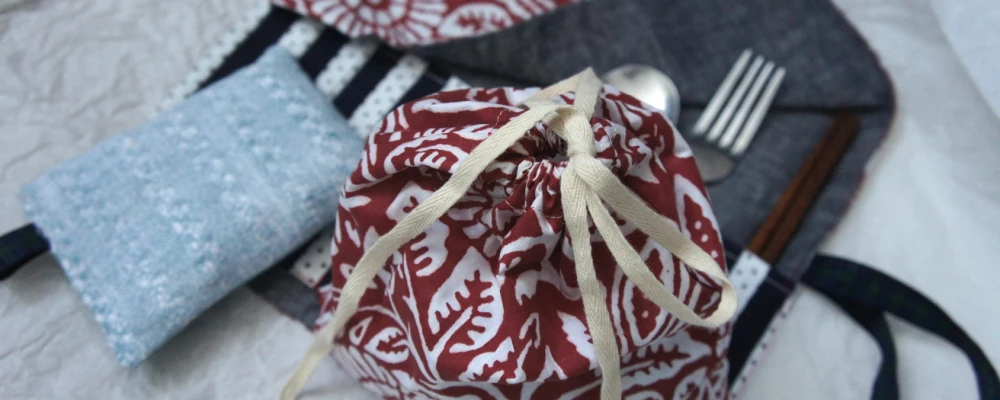
Eight Last Minute Easy And Beautiful Zero Waste Gifts To Make
If you're caught in a fluster of concern that you've forgotten someone's gift, or perhaps due to the pandemic you have actually been unable to get outside (and don't want to rely on online shopping), there is likely some sewing projects you can make with minimal materials and limited fuss. Here we give you some quick inspiration on "zero waste" projects you can make - by zero waste, we don't mean that you'll have nothing leftover, but inside the aim is to use what you have, and with it, also inspire a sustainable lifestyle.
You're more likely to use a beautiful textile product handmade by a loved one, over plastic bags or disposables, and they're a conversation starter too, to get more people thinking about what they're using. There are so many of these type of products on the market now, with many wonderful businesses to support like Conscious House London and Agnes LDN. Yet, these incur cost that sometimes seems hefty when you have the sewing skills yourself, a pile of fabrics to get through, and of course, all the cost, time and energy that comes with shipping.
Read on for sewing projects to make at the last minute with what you have at home.
Naturally dyed plain fabrics
Take some unwanted linen homewares, old bedding, remnant fabrics, whatever plain natural fibre textiles you have to hand. Natural dyeing doesn't need to be time consuming, an exacting science or needing lots of equipment.
Equipment
It is handy to have some old pans, because it is advised not to mix food with dyes. Even if you're only using food waste, the pigments will usually come from the parts we don't eat. You may also use a mordant, like alum or iron or vinegar, and these can both corrode the metal of the pan, and be nasty to ingest.
Materials
Whatever natural textiles you have to hand. Wash them first in a mild detergent to rid them of any excess oils, dust and residue. You can then use the pieces just like this, or you can mordant them with examples as above (even urine, if you've got some to hand, but maybe not socially appropriate for making gifts).
Ingredients
I'd been saving ingredients for some time. A five-year-old jar of blackberry dye, some eight-year-old packets of gall nut powder, birch bark and oak bark, a massive set of cast iron pans, and various dried flowers. The coloured petals foraged from the ground were saved for the bundle dyeing to get a quick pop of colour, while handfuls of other dried flowers like hollyhocks and calendula were boiled for dye. I also had around 30 avocado pits, saved by freezing and then defrosted before chopping up for the vat. So, it's whatever food waste you can get hold of like onion skins, teabags, avocado pits. And also what flowers you can find, mindfully foraged or saved from bouquets.
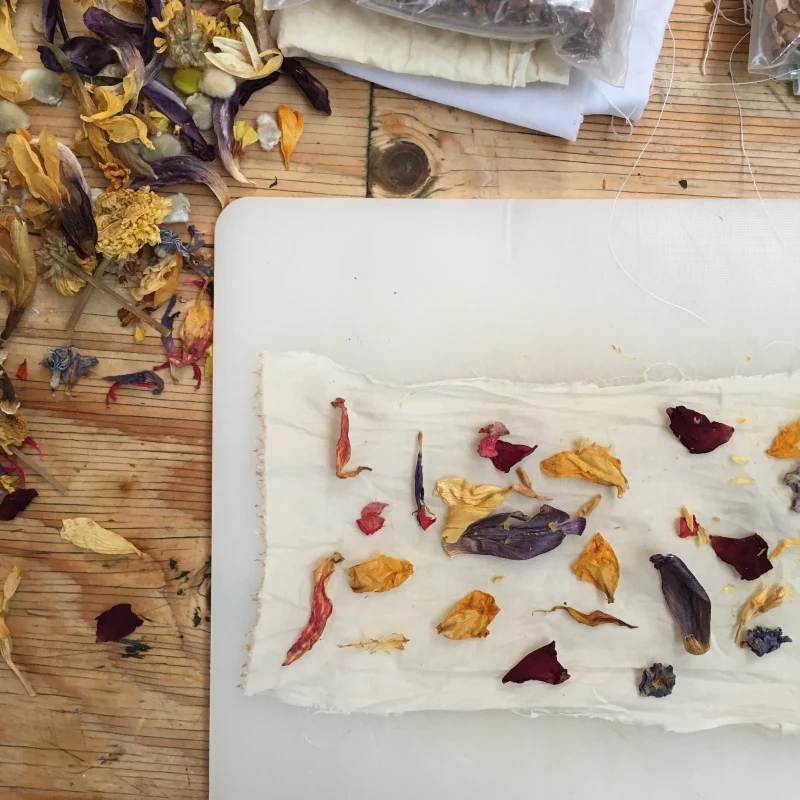
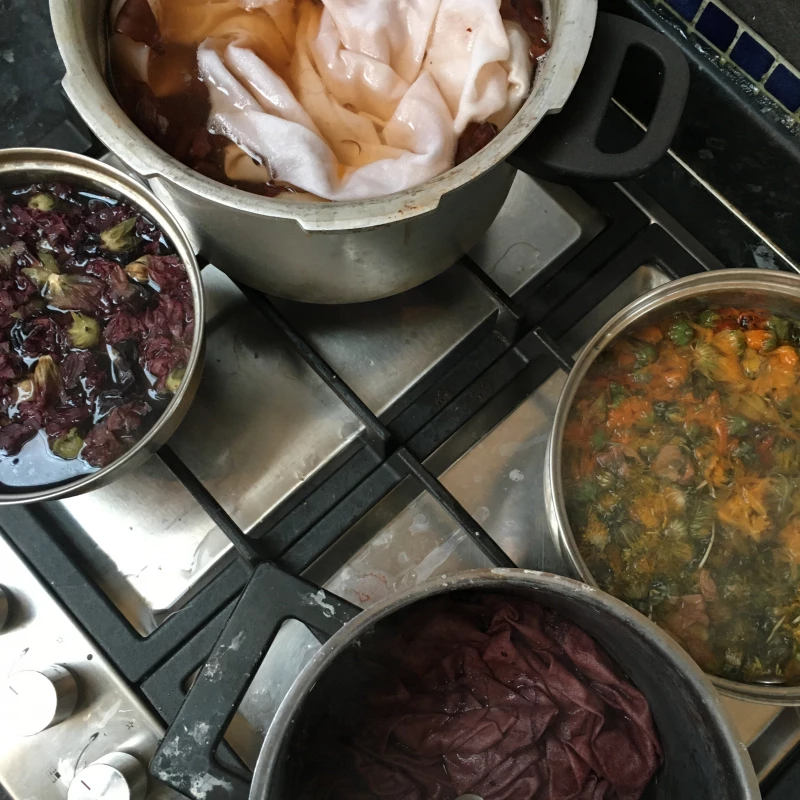
What natural dyeing offers you, is time for magic. And from them, a refresh of textiles you may not have any other inspiration from. And while they're not being used for clothing or anything that will be washed terribly often, you don't need to worry too much about colour fastness.
Project one: Drawstring bag
Use them primarily as gift wrapping or fill them with sweets. Your recipient can then use the bag for picking up bulk grains and nuts from their local shop, as a toiletry bag, for transporting a book... depending on what fabric you decide on, and the size, this versatile bag will come in handy for anyone.
Use anything for the drawstring - you've probably got a stash of trims: just make sure your drawstring channel is wide enough, and will be strong enough in proportion with the size of the bag.
Fabric: Mediumweight organic cotton basketweave (from two batches so slightly different textures, which is nice!) dyed with oak bark darkened with gall nut powder and avocado dipped in gall nut/iron for a grey tone. The smaller bag is a light pink dyed with birch bark. The drawstring are various ribbons on hand, but we have 6mm organic cotton tape that can also be dyed. Also used is scarlet handblock fair trade cotton cambric.
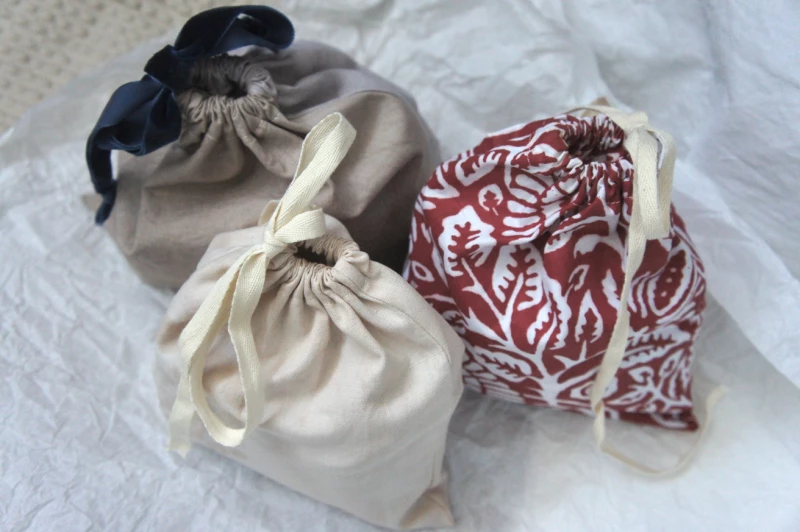
Project two: Furoshiki wrap or napkins
A simple square or rectangle can be sewn with a double rolled hem, and straight away, you have a piece of finished fabric for gift wrapping furoshiki style, and then your recipient can use it as a napkin, handkerchief, dishcloth, bandana, scarf...
You probably need to make a few to figure out what size you need, or if you have a specific gift you want to wrap, then use this as the initial size basis.
Fabric: Smooth white cotton muslin, dyed with dried calendula (pot marigold).
Project three: Lavender pack
Two simple squares, or rectangles, depending on how much filling you have, makes for a super nice and easy gift. No one would be unhappy with something as relaxing as a little pack to wear or fiddle with for relaxing vibes! Dried lavender, plus any light seed you have - linseed, flaxseed, hemp seed, lentils - make for a soft mix that retains the scent.
Fabric: organic cotton batiste naturally dyed by bundle technique, and organic mediumweight basketweave cotton dyed with hollyhocks.
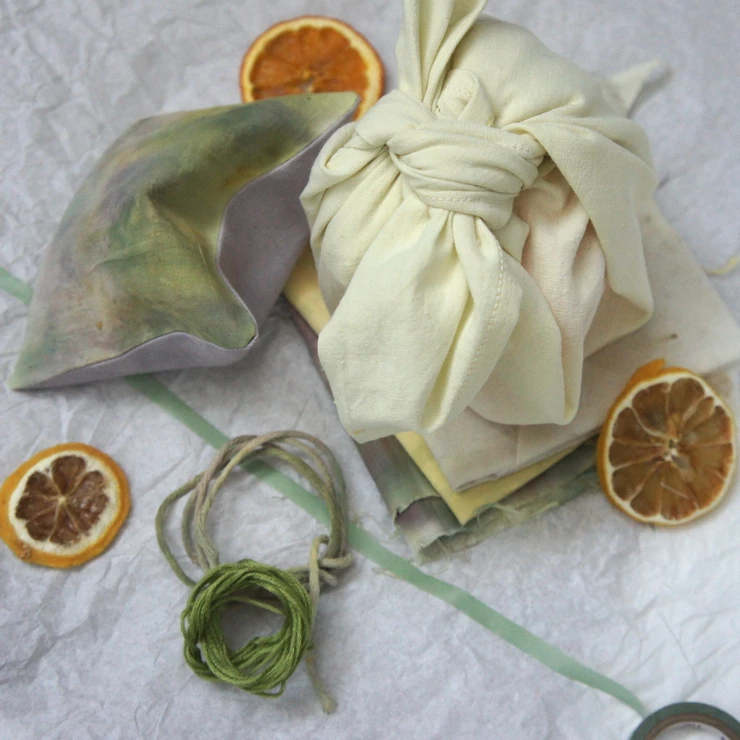
Project four: Cutlery wrap
Simple rectangles and a bit of ribbon gives you an easy cutlery wrap. Also works for knitting needles and crochet hooks, as long as you get the length right. I made it so that the cutlery has a flap to keep everything more secure. I measured briefly how wide the channels would need to be, but as long as you've got a few for the essentials, it's likely that many utensils will fit in.
Fabric: Fair Trade scarlet handblock, indigo handwoven chambray and a scrap of my own fabric.
Project five: Dish scrubbers
Provided you have a fabric on hand that has some abrasive texture, you can make dish scrubbers. Hessian is probably best to give that rough texture we're use to, but upon handling the blue ramie fabric, it felt that it had enough ridges to get food off. Perhaps it would get dirty quickly, so they're also handy as just a surface cloth. Stuffed with scrap textiles, you can also hide away any pieces of fabric from making these projects. Maybe not the most exciting of Christmas gifts, but they work wonderfully in a bundle with other zero waste lifestyle goodies.
Fabric: Decorative ramie-cotton tweed with a mix of backings and reclaimed ribbon loop
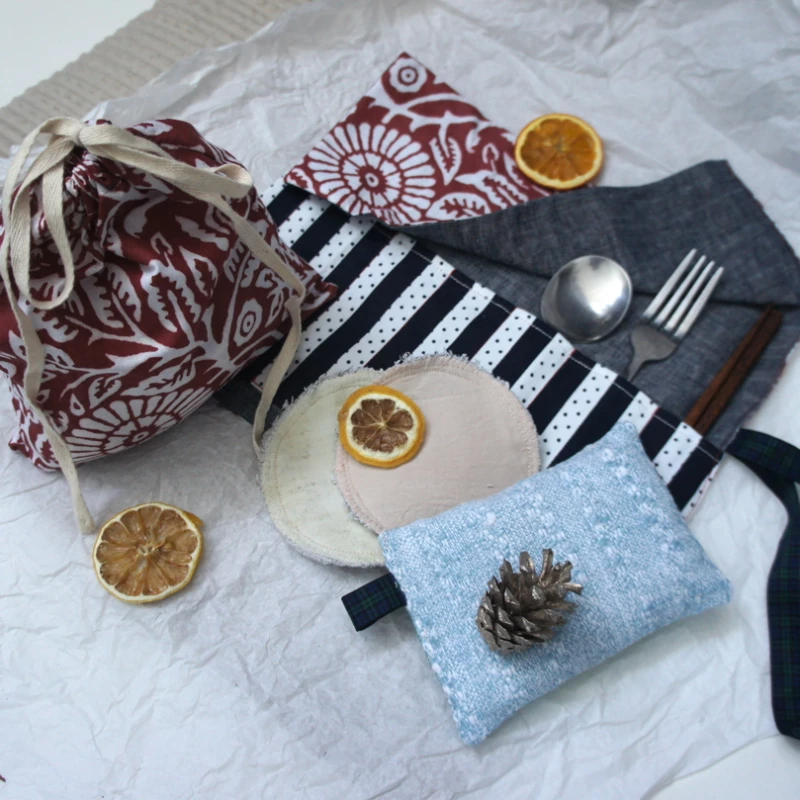
Project six: Make up pads
A staple now in sustainable living packages, these are so so quick to make. Find a circular item to draw around, pick up any scrap fabric that is soft to the skin, preferably that has some texture or absorbency, and cut out two layers for each pad. I used an old discoloured towel for one side, with naturally dyed muslin and plain weave fabrics for the other side. Making them all in cotton means they can be watched easily. To make, sew the two layers together on the round, and use your zig zag stitch to finish (I couldn't be bothered to rethread my overlocker in a matching thread, but that's also an option if you happen to have one).
Fabric: old cotton towelling (you can source organic cotton new from our friends Organic Textile Company), and naturally dyed smooth white cotton muslin, organic lightweight basketweave cotton and organic mediumweight basketweave cotton.
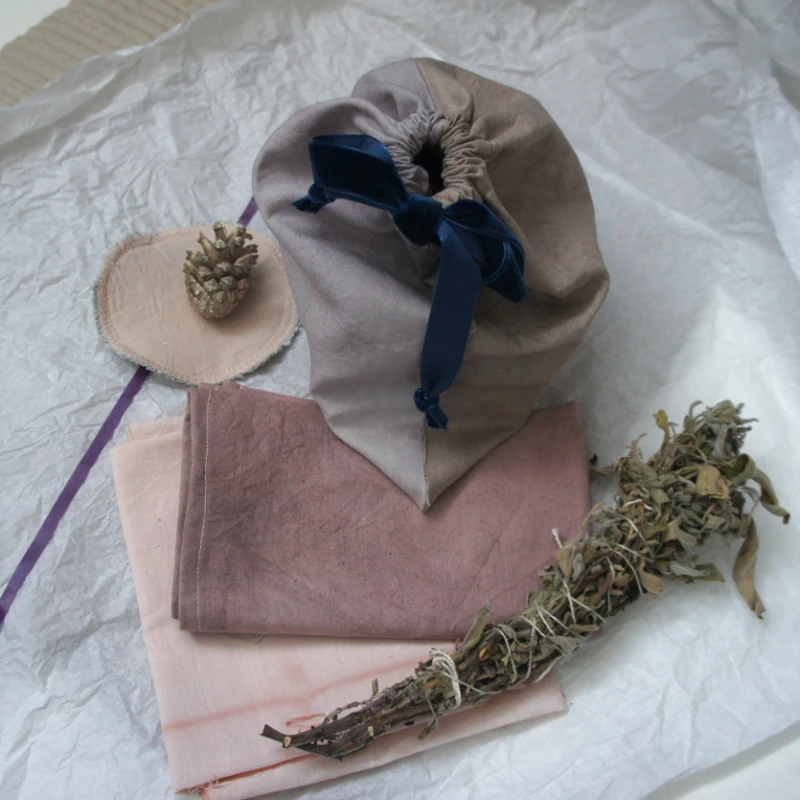
Project seven: Bunting
Perfect for any scrap fabric you have, or make a statement with fresh handblocks. These have been backed onto a middle interfaced layer for stiffness, but you can keep them floppy - sometimes the fabric curls, so go for a heavier weight fabric if you don't want this. The tape at the top is herringbone, which tends to be the standard for bunting.
Fabric: Tree Of Life handblock cotton muslin and Chakra handblock canvas
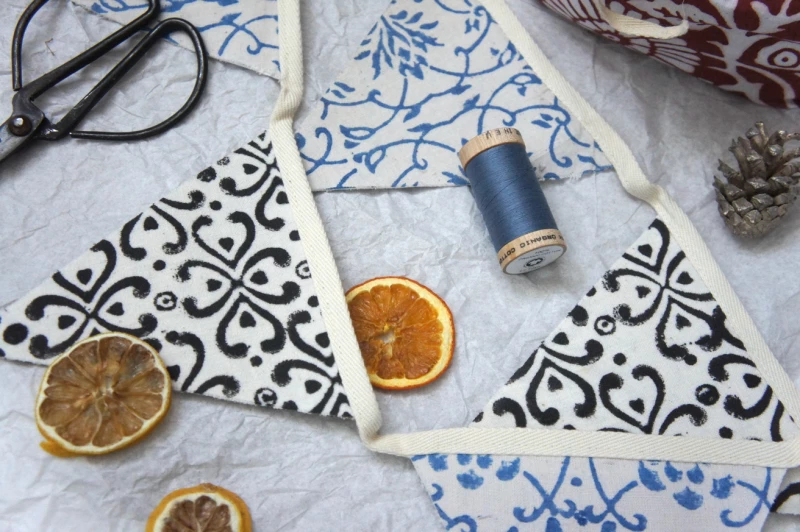
Project eight: Coffee cosy
This is quite a bespoke project, but a cosy made using patchworked fabrics and wadded with organic cotton batting (or skived layers of the wool from your veg box) makes for a comfortable sweet gift. Tea cosies are straightforward in that it's two semi-circles padded out and sewn together. For this coffee cosy, it needed to fit a Hario coffee jug underneath and yet be accessible. So, creating a paper pattern and playing around with available sizes of dyed fabric, I managed to piece what appears to be a mini duvet that the coffee jug nestles in.
Fabric: various plain weaves including smooth white cotton muslin, lightweight basketweave and cotton batiste, dyed with avocado pits, an unknown yellow flower and birch bark.
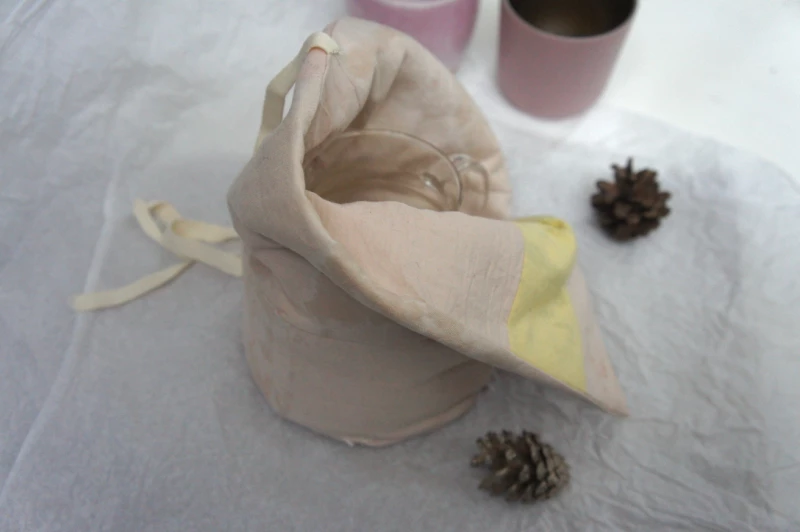
You can find wonderfully fun and fresh fabrics in our textile shop Offset Warehouse, including khadi cottons made by fair trade clusters in West Bengal, India and also hand block printed and batik organic cottons from a female co-operative. And if you need something heavier weight, jute hessian is a durable classic.
